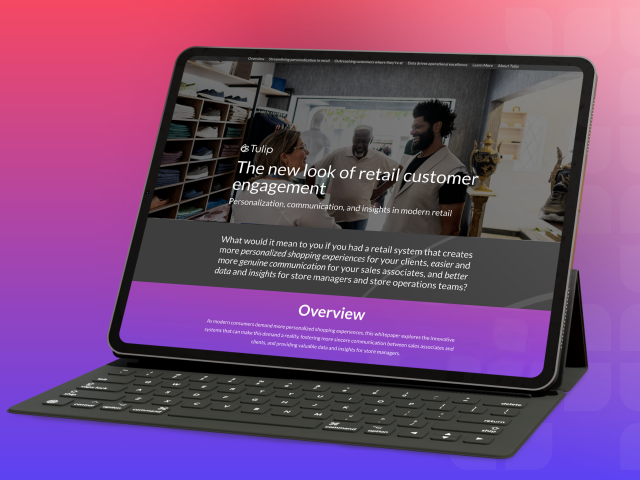Defining the TikTok theory and what it means for the industry
In the ever-evolving landscape of consumer economics, a new term has emerged on social media platforms encapsulating the financial struggles faced primarily by Millennials and Gen Z— the “Silent Depression.”
And this phenomenon should be a cause for concern within the retail industry.
To stay ahead of the curve, retailers need to understand the challenges caused by the “Silent Depression”, the effects we’re already starting to feel from it, and what strategies are being developed to help solve them.
What is the Silent Depression?
The “Silent Depression”— a term coined on TikTok— aims to explain how key expenses are accounting for an increasing portion of the average American’s take-home pay.
Though economists’ line of thinking goes against this notion, many consumers feel that the rising inequality between classes isn’t being fully captured by statistics.
Regardless of who is saying what, the impact of high inflation and the rising costs of living, including housing, education and healthcare, leaving consumers with less discretionary money.
Unlike their older counterparts who are largely more financially sound— they own their own homes, are established in their careers, and have retirement savings— Millennials and Gen Z are feeling the weight of the “Silent Depression”; amassing student loan debt, sky-high rent, and the feeling that no matter how much they save, they’ll never have the American dream ideal of homeownership.
So, why should retail be concerned?
Well, for starters, Millennials and Gen Z have roughly $2.9 trillion in spending power. Additionally, as digital natives, the two generations have an incredible amount of influence over other consumers, telling them how and where to shop and what to buy, thanks to platforms like TikTok, Instagram, and Reddit.
The impact on holiday shopping habits
Holiday shopping in 2023, gave a glimpse into the impact that the “Silent Depression” is having already.
Inflation has been a persistent challenge for retailers by creating cautious consumers. Back in 2020 and 2021, consumers were flush with stimulus cash and ready to spend it quickly, but now, consumers have been diligent and patient with making sure they get the best value. Overall, spending growth in 2023 less than half of last year’s 7.6% growth.
Black Friday generated $9.8 billion in online sales which is up 7.5% from last year. Although people appear to be spending heavily on mobile and online, consumers are still choosing cheaper fulfillment options as opposed to faster ones. On Black Friday, about 80% of all online orders used standard shipping.
A Mastercard analysis of this year’s Black Friday sales found that in-store sales rose just over 1% versus online sales, which grew by over 8% compared to last year, potentially due to shoppers cross-shopping online for deals, rather than traveling from store to store.
Buy Now Pay Later (BNPL) is becoming more popular with shoppers looking to stretch their wallets, with a total of $79 million in BNPL purchases on Black Friday which is a 47% increase from 2022.
Looking at what’s to come for retail in 2024
So, taking into account the state of the economy and, more importantly, how consumers are perceiving the economy, what’s next for retail as we head into the new year?
Some strategies retailers are using to adapt to the current economic climate include:
Embracing omnichannel retailing: Because customers are turning back to online shopping, retailers are focusing more on omnichannel strategies to enhance the customer experience and stay competitive. This involves integrating online and offline channels to provide a cohesive shopping experience through strategies like live chat, video calls, and cross-channel visibility to customer activities like online purchases and wishlists.
Enhancing customer experience: 75% of Gen Z consumers and 41% of Millennials would quit a brand if their experience wasn’t personalized, indicating the importance that a personalized CX has on customer loyalty and higher spending. To remain relevant, retailers are doubling down, transforming store operations to be more customer-centric, and reimagining how customers engage with the brand in the most personal ways.
Defining a strong value proposition: To meet the demands of cost-conscious consumers, retailers are developing a strong value proposition. This includes investing in price, as well as striking a balance between quality, convenience, and the shopping experience.
Bringing it all together
The “Silent Depression” is a resounding wake-up call for the retail industry. The 2023 holiday shopping season offered a glimpse into the tangible impacts, marked by cautious consumer behavior and a notable shift to online shopping patterns.
The strategies for survival and success in 2024 are already taking shape, with a focus on omnichannel retailing, an intensified commitment to creating personalized customer experiences, and the crafting of compelling value propositions.
Sephora, for example, excels in providing personal and omnichannel customer experiences through their mobile app. The app’s “in-store companion” feature enables users to find a store, check inventory, and book appointments. The app also lets customers virtually try on products and receive personalized recommendations. When visiting a store, customers can use the app to find the products they have virtually sampled. This enables their customers to have a cohesive brand experience no matter how they shop.
To thrive in the face of the Silent Depression, retailers must not only adapt but innovate, aligning their strategies with the evolving economic perceptions of consumers.
Learn more
Tulip is the world’s largest cloud-based retail experience platform provider, with best-in-class Clienteling and Point of Sale solutions that let retailers deliver on the promise of omnichannel commerce.
Tulip equips the world’s most iconic retailers ike David Yurman, Versace, Tumi, Mulberry, Saks Fifth Avenue, Kate Spade, COACH, and Michael Kors to build deeply personal connections with customers, fulfill orders, close out purchases, and maximize store associate productivity and performance.
Learn more about how Tulip Clienteling and POS can transform your brand.
Recommended reads
If you liked this blog, check out these other titles:

